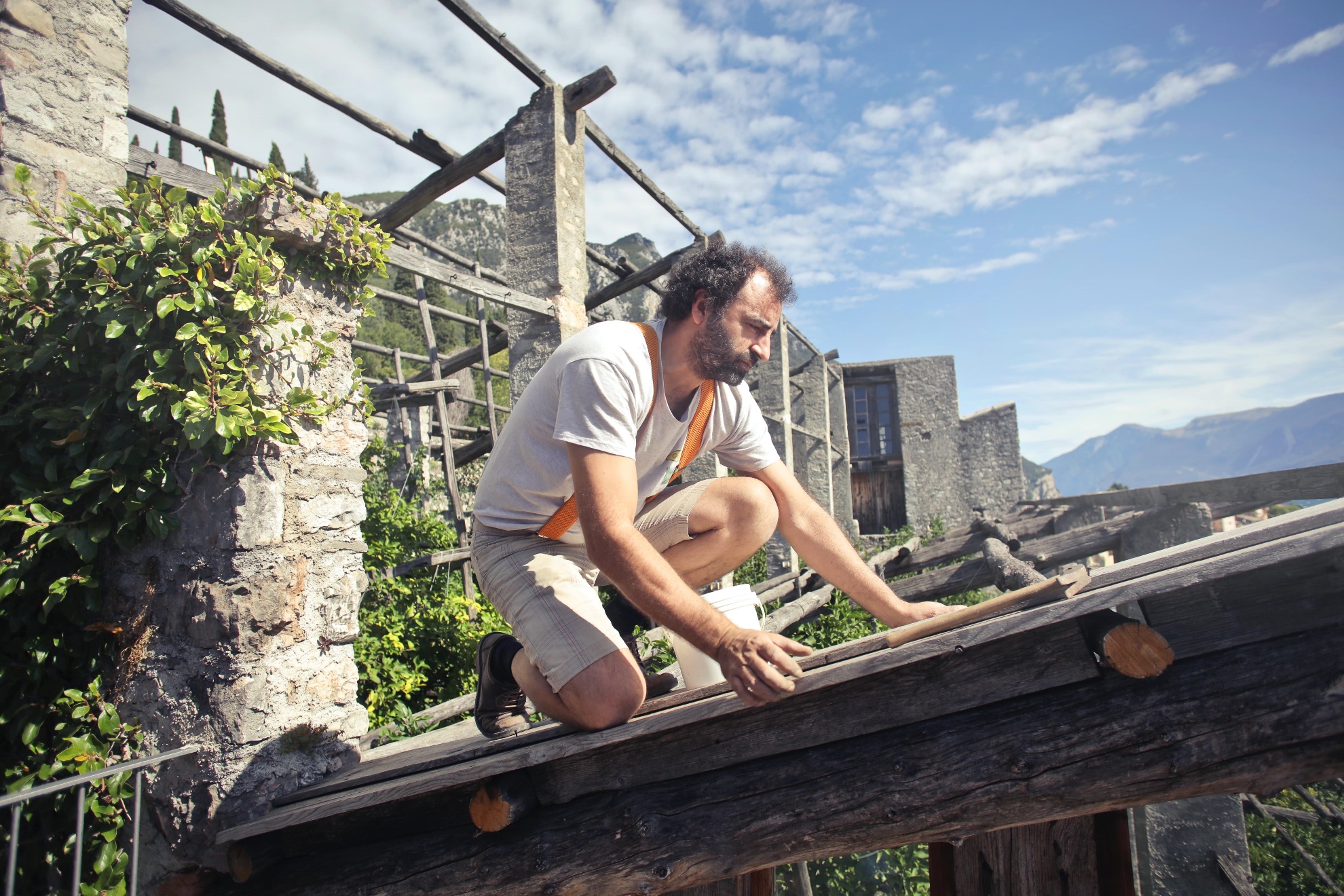Your home is a symbol of security and comfort, a place where memories are created and preserved. As the largest investment most people make in their lives, safeguarding its structural integrity is paramount. The roof, a sentinel of sorts, forms the first line of defense against nature’s elements, protecting your cherished space from wind, rain, sun, and snow. Despite its pivotal role, the roof often gets overlooked until a problem arises. Proper roof maintenance, therefore, becomes fundamental not only in preserving the aesthetic appeal of your home but also in extending the roof’s lifespan and maintaining the overall structural integrity of your home.
Although professional roofing maintenance services are critical, there’s a range of DIY strategies that homeowners can employ to supplement these expert services. By taking a proactive approach to roof maintenance, you can spot issues early, potentially saving thousands of dollars in repair costs down the line. This article provides a comprehensive guide on DIY roof maintenance, delivering valuable insights on key tips and precautions every homeowner should know.
Understanding Your Roof Type
Every DIY journey starts with understanding, and roof maintenance is no different. The first step to effectively maintaining your roof is gaining a thorough understanding of your roof type. Just like a car, every roof, depending on its material and design, has specific maintenance needs. Asphalt shingles, metal roofing, tile, slate, or wood shake, all have unique characteristics and consequently require different levels of attention and care.
It’s essential to research your specific roofing material, become familiar with its properties, and understand its vulnerabilities. Armed with this knowledge, you can tailor your maintenance procedures to effectively cater to the unique needs of your roof. This targeted approach to roof maintenance not only ensures that your efforts are productive but also helps in extending the life of your roof.
Regular Roof Inspections
One of the most effective proactive maintenance strategies is conducting regular roof inspections. These inspections provide the first line of defense against any potential roofing issues, offering an opportunity for early problem detection and rectification. During these inspections, be on the lookout for any signs of wear and tear such as missing, broken, or curling shingles, damaged flashings, or any signs of rot or mold. In addition, pay attention to your roof’s overall color uniformity. Discolored patches could indicate damage or moss and algae growth, both of which require prompt attention.
Timing is everything when it comes to roof inspections. The ideal inspection routine would be twice a year, preferably during spring to rectify any damage caused during the winter months and in fall to prepare the roof for the harsh weather ahead. However, it’s important to note that roof inspections should not be limited to these periods. After a severe weather event, an additional inspection is prudent to assess if the roof withstood the harsh conditions.
For safety purposes, it’s recommended that homeowners use binoculars for the inspection, thus maintaining a safe distance from the roof. Alternatively, drone technology can be employed for those comfortable using it.
Clean Your Gutters
One aspect of roof maintenance often overlooked by homeowners is gutter cleaning. Your roof’s drainage system plays an essential role in its overall health. Gutters and downspouts ensure that water is efficiently removed from your roof, preventing water-related damage. However, gutters can often become clogged with leaves, twigs, and other debris, especially during fall and spring when trees shed leaves and blossoms.
Clogged gutters can cause water to back up and spill onto the roof and siding of your house, leading to potential rot and paint damage. In winter, trapped water can freeze and expand, damaging the gutters and roofing material. Therefore, regular gutter cleaning, particularly during shedding seasons, is paramount to prevent these potential issues.
Trim Overhanging Branches
Nature, while aesthetically pleasing, can pose significant risks to your roofing system. If your home is surrounded by tall trees, overhanging branches can become potential hazards. Branches can scrape and gouge roofing materials, stripping away the protective layers and exposing the roof to damage. Furthermore, during a storm or high wind event, these branches can break off, potentially causing substantial harm to your roof.
Leaves from these overhanging branches also contribute to roof-related problems. They can accumulate on the roof or in gutters, causing blockages and promoting moisture retention. This moisture build-up can lead to a myriad of issues including rot, mold growth, and in cold weather, ice dam formation.
Regular trimming of overhanging branches helps to minimize these risks, ensuring your roof remains unscathed and functioning optimally. This maintenance task should be carried out carefully, or by a professional, to avoid accidental damage to the roof or personal injury.
Prevent Ice Dam Formation
For homeowners residing in regions with harsh winters, ice dam prevention is a crucial maintenance task. Ice dams occur when heat from inside your home melts the snow on your roof, and the water runs down and refreezes at the roof’s edge. This ice build-up prevents subsequent meltwater from draining off the roof, forcing it back under the shingles and potentially leading to leaks and water damage inside your home.
Regular use of a roof rake to remove excess snow, especially after a heavy snowfall, can help prevent ice dam formation. Also, improving the insulation and ventilation in your attic can reduce the amount of heat reaching the roof, reducing the risk of ice dam formation.
Roofing Maintenance Service
No matter how vigilant you are with your DIY roof maintenance, it cannot replace the need for professional roofing maintenance services. Professionals like the ones at Triple Tree Rejuvenation bring an unparalleled level of expertise, honed by years of experience and backed by comprehensive training.
Professional roofers possess the skills, tools, and knowledge necessary to perform a thorough inspection of your roof, identifying and rectifying problems that may not be evident to the untrained eye. They can provide a detailed assessment of your roof’s condition and perform necessary repairs or replacements that might be beyond the scope of a DIY approach. Engaging these professionals for regular maintenance checks can help detect issues early, preventing minor problems from escalating into significant, costly repairs.
Precautions
Safety is paramount when it comes to roof maintenance. Roofs can be slippery and high off the ground, making any work potentially dangerous. It’s crucial that homeowners ensure they have the right safety equipment before embarking on any DIY roof maintenance tasks. This includes a sturdy ladder, non-slip shoes, and a harness, if necessary. Additionally, always ensure you have a reliable spotter to assist you, especially when using ladders.
Never attempt to work on your roof in adverse weather conditions, such as during high winds, rain, or snow. Wet roofing materials can be extremely slippery, and strong winds can knock you off balance, leading to severe injuries. Lastly, it’s essential to know your limits. If you’re uncomfortable or unsure about performing a maintenance task, always opt for safety over saving a few dollars. Call a professional roofing maintenance service to handle the task instead.
A proactive approach to roof maintenance, combining both DIY and professional efforts, can greatly extend the life of your roof and maintain your home’s integrity. As Benjamin Franklin wisely said, “An ounce of prevention is worth a pound of cure.” Regular inspections and minor reparations can prevent larger issues and costlier fixes in the future. Remember to always prioritize safety and don’t hesitate to call on professional roofing maintenance services like Triple Tree Rejuvenation for assistance when needed. Together, we can ensure your roof remains strong, capable of standing up to the elements and safeguarding your home for years to come.
Spot and Repair Minor Issues
Addressing minor roofing issues early is a critical component of proactive roof maintenance. This includes replacing missing or damaged shingles, repairing broken flashings, and clearing moss or algae growth. Remember, minor issues can quickly escalate into major problems if left unattended. For example, a missing shingle can expose the roof underlayment to the elements, leading to leaks or more extensive damage.
For most minor repairs, homeowners can find step-by-step tutorials online or at a local home improvement store. However, if you’re uncomfortable undertaking the repairs or if the issue seems too extensive, don’t hesitate to call in a professional.
Check and Maintain Attic Insulation and Ventilation
The condition of your attic plays a significant role in the health of your roof. Proper insulation and ventilation in the attic help regulate the roof’s temperature, preventing hotspots that can lead to uneven snowmelt in winter. These hotspots can contribute to the formation of ice dams, a major threat to roofs in colder climates.
During your routine inspections, check the attic for proper insulation and signs of moisture or mildew, which may indicate a ventilation issue. Addressing these problems promptly can help maintain the overall health of your roof and extend its lifespan.
Roof Algae and Moss
In humid climates, roofs can often become a breeding ground for algae and moss. Not only do these organisms mar your home’s aesthetic appeal, but they can also cause substantial damage over time. Both moss and algae retain moisture, and in cold climates, this moisture can freeze, causing the shingles to lift or crack.
Removing algae and moss from your roof involves using a cleaning solution, often made up of bleach and water, and gently scrubbing the affected areas. Remember not to power wash shingles as this can cause damage. After cleaning, consider installing copper or zinc strips at the roof’s peak to prevent future growth, as both metals are toxic to algae and moss.
Seal Your Roof
Sealing your roof is an excellent way to add an extra layer of protection against the elements. Roofing sealants, available at most home improvement stores, create a waterproof barrier that protects your roof against water damage and helps prevent wind uplift during heavy storms. However, before you seal your roof, consult a roofing professional to determine whether this step is suitable for your specific roof type.
The value of maintaining your roof cannot be overstated. Regular maintenance not only helps extend your roof’s life but also protects your home’s interior, enhances its curb appeal, and can improve its energy efficiency. While it’s true that some tasks require the expertise and equipment of professional roofing maintenance services, homeowners can play an active role in preserving their roof’s health.
Ultimately, understanding your roof and taking a proactive stance is the key to efficient roof maintenance. By following these DIY tips, employing necessary precautions, and knowing when to call on the professionals like Triple Tree Rejuvenation, you can ensure your roof continues to perform its duty – protecting your home through every season. Remember, the longevity and effectiveness of your roof are a team effort. We all have our part to play in home preservation, making it a place we are proud to call home.


